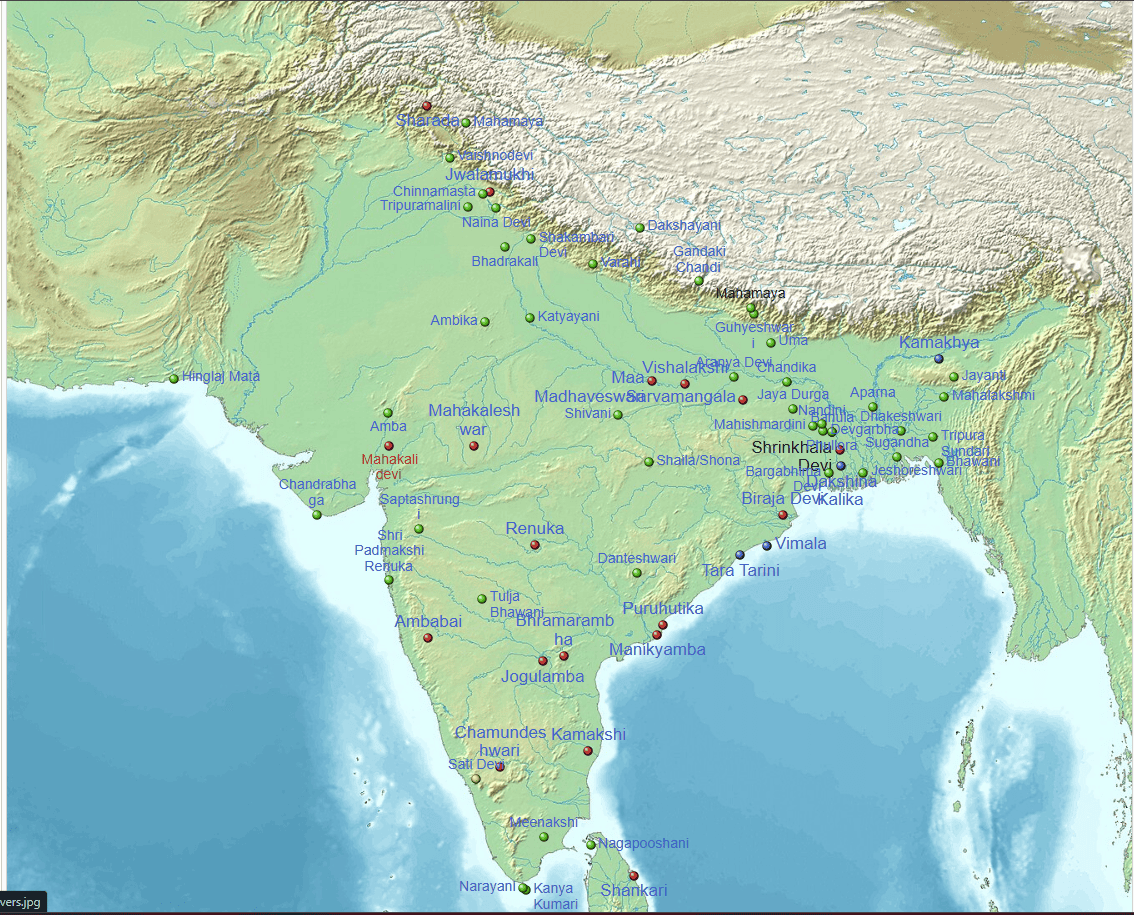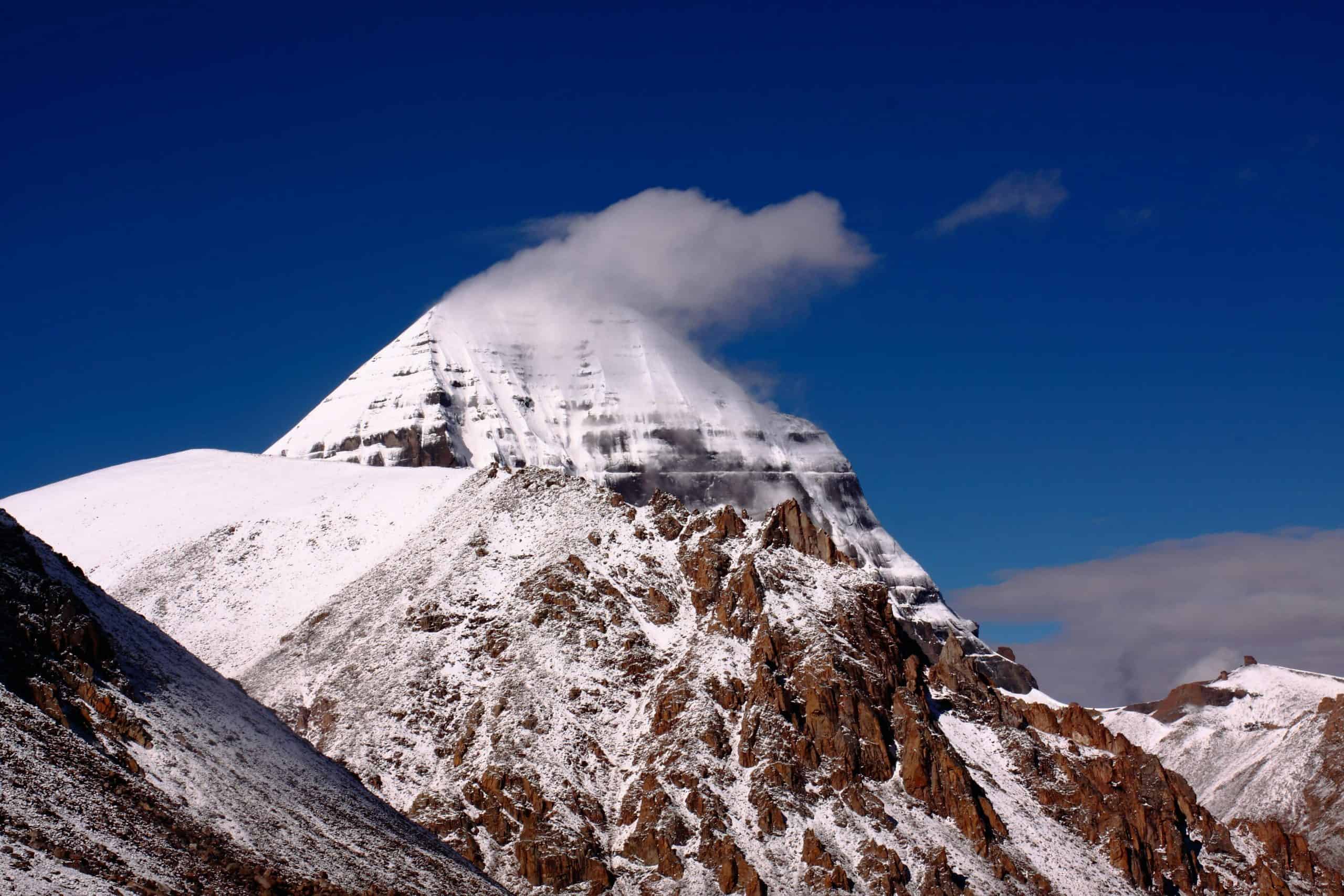Explore the sacred Shakti Peeths of India, ancient sites where the divine feminine energy is believed to reside.

Across the vast spiritual landscape of India stand the Shakti Peethas, ancient temples that honour the divine feminine energy known as Shakti. These sacred sites are far more than places of worship. They are reservoirs of spiritual power, woven deeply into mythology, culture, and devotion, and form the foundation of what many devotees recognise as the sacred list of Shakti Peethas. Generations of pilgrims have walked towards them seeking strength, healing, protection, and wisdom. In every region where a Shakti Peetha stands, the temple becomes a heartbeat of local identity, reminding communities of the profound presence of the Goddess in everyday life.
Meaning of Shakti Peethas
The expression these places s translates to Seat of Shakti. It refers to sacred locations that mark the spots where parts of Goddess Sati’s body or ornaments are believed to have fallen. These sites are considered living manifestations of Shakti’s energy. Shakti represents the cosmic force behind creation and destruction, the power that sustains life, the fire of knowledge, and the compassion that nurtures all beings. Because each Peetha corresponds to a specific body part or symbol of the Goddess, every temple holds a distinct spiritual vibration and character.
Many ancient texts mention these shrines. The traditional number most commonly accepted is fifty one, although some scriptures describe fifty two or even one hundred and eight. These temples span India as well as regions in Bangladesh, Nepal, Pakistan, Sri Lanka, and Tibet, revealing how deeply the worship of Shakti is rooted across the subcontinent.
Cultural Importance
The Peethas play a defining role in the cultural traditions of many regions. Local festivals, music, rituals, storytelling, and even village customs draw inspiration from the energy of these temples. Around each Peetha, communities have evolved their own habits of worship that blend seamlessly with local ways of life. Pilgrims travelling from distant places bring stories and rituals back to their homes, creating cultural links that have lasted for centuries.

For countless families, visiting a Shakti Peetha is a rite of passage shared across generations. It marks moments of gratitude, healing, new beginnings, and personal transformation. These temples hold the memories of births, marriages, prayers, vows, and hopes carried in the hearts of millions.
Significance in Hindu Tradition
Within Hindu spirituality, the Peethas are regarded as some of the most potent locations for the worship of the divine feminine. They are believed to radiate energy that helps remove negative influences, awaken inner strength, and bring emotional clarity. Devotees often describe an unexplainable sense of calm, fulfilment, or spiritual reassurance after worshipping at these shrines.
The Peethas also emphasise the fundamental belief that creation is powered by a balance of masculine and feminine energies. Shakti represents dynamism, movement, and the active force of the cosmos. Shiva represents consciousness, stillness, and awareness. Together, they form a holistic spiritual framework. At each Shakti Peetha, this delicate balance is honoured and celebrated.
Legend and Mythological Origins
The Story of Sati and Shiva
The origins of the Peethas emerge from one of the most profound and emotional tales in Hindu mythology. Sati, the first wife of Lord Shiva, was born to King Daksha. Although she loved Shiva deeply, her father disapproved of Shiva’s austere lifestyle. Despite his objections, Sati married Shiva and lived happily with him on Mount Kailash.

When Daksha organised a grand yajna, he invited all celestial beings except his daughter and son-in-law. Sati wished to attend the ceremony, hoping that her father might accept her marriage. Shiva advised her not to go, but her longing for reconciliation took over. When Sati arrived, she faced humiliation and harsh words directed at Shiva. Unable to endure these insults, she invoked her inner power and immolated herself in grief.
Shiva, devastated by the loss, entered a profound state of sorrow. He lifted Sati’s lifeless body and began roaming across the worlds. His grief shook the cosmic balance. To calm him and restore harmony, Lord Vishnu used his Sudarshan Chakra to separate Sati’s body into pieces. As each part fell to the earth, it became a place sanctified by her divine essence. These places became the Shakti Peethas.
Establishment of the Peethas
Each Peetha corresponds to a specific body part or ornament of Sati, which is why each temple carries its own spiritual signature. Some Peethas are associated with fierce forms of the Goddess, expressing her protective and transformative power. Others reflect her nurturing, motherly presence. Together, they form a spiritual map that stretches across the subcontinent and symbolises the eternal nature of the Goddess.
This story of loss and renewal is central to Shaktism. It illustrates the themes of devotion, sacrifice, destruction, and rebirth. It is also a reminder that divine love cannot be destroyed and that spiritual energy continues to guide the universe even after catastrophic loss.
Spiritual Significance of the Shakti Peethas
The Peethas are revered as places where the divine feminine remains eternally awake. Pilgrims believe these sites amplify prayers and purify intentions. Worship at a Peetha is often described as a deeply internal experience, where the mind becomes still and the heart feels connected to something vast and timeless.
Many Peethas are also considered vital centres for Tantric practices. Tantra views the Goddess not as a symbolic figure but as pure energy and consciousness. At these temples, rituals aim to awaken the Shakti within every individual and harmonise it with higher awareness. Whether one follows Tantric traditions or not, the temples have an undeniable spiritual pull.
The Peethas stand as reminders that empowerment, strength, and compassion coexist within the divine feminine. They invite devotees to recognise these qualities within themselves.
The Adi Shakti Peethas
According to the Kalika Purana, four Shakti Peethas are considered the most powerful. These are known as the Adi Shakti Peethas and are believed to have manifested from significant parts of Sati’s body. All four are located in the eastern region of India, forming a sacred cluster that represents the heart of Shakti worship. These four are Kamakhya in Assam, Dakshina Kalika in West Bengal, Tara Tarini in Odisha, and Bimala in Odisha. Each temple has its own distinct energy and significance.
Kamakhya Temple, Assam
Kamakhya Temple stands atop Nilachal Hill in Guwahati and is one of the holiest centres of Shakti worship. The most unique aspect of this temple is that it does not contain an idol. Instead, the Goddess is represented by a natural stone formation shaped like a yoni. Water from an underground spring flows continuously over this stone, symbolising creation and life.
Scriptures describe this Peetha as the place where Sati’s womb and genitalia fell. Because of this, Kamakhya is regarded as the centre of fertility worship in India. It is also the most important Tantric site in the world, with shrines dedicated to the Dasamahavidya, the ten wisdom forms of the Goddess.
Kamakhya becomes the heart of the spiritual world during the Ambubachi Mela in June. It is believed that during this period, the Goddess undergoes her annual menstruation. The temple remains closed for three days and then reopens to elaborate celebrations that honour fertility, cosmic cycles, and the sacred feminine body.
Kalighat Temple, West Bengal
Kalighat Temple in Kolkata is one of the most visited Peethas. It is associated with the place where the right toe of Sati fell. The presiding deity, Dakshina Kali, is worshipped as a fierce yet deeply protective form of the Goddess. Her idol, carved from a special black stone, has three large eyes, a long gilded tongue, and four golden arms. The presence of the Goddess here is both awe inspiring and comforting.

Kalighat is particularly vibrant during Kali Puja in October or November, when thousands gather to honour the goddess who destroys evil and nurtures her devotees with fierce compassion. The name Kalighat originates from the words Kali and ghat, meaning the steps leading down to the river.
Tara Tarini Temple, Odisha
Tara Tarini Temple is situated on the picturesque Kumari Hill with the Rushikulya River flowing below. It is believed to be the place where Sati’s breasts fell, which is why the site is known as Stana Khanda. The goddesses Tara and Tarini are worshipped as two ancient stone forms decorated with vibrant sarees and silver masks. They are regarded as sister manifestations of the Divine Mother.
This temple has been a central hub for Tantric worship since ancient times. The entire month of Chaitra becomes a devotional celebration called Chaitra Parva. Thousands of devotees climb the long staircase leading to the temple as an act of dedication and faith.
Bimala Temple, Odisha
The Bimala Temple lies within the immense Jagannath Temple complex in Puri. It marks the spot where the feet of Sati are believed to have rested. The uniqueness of the Bimala Shrine lies in the unity of Shakti and Vishnu. Goddess Bimala and Lord Jagannath are worshipped side by side, representing the perfect balance between creative and preservative energies. This harmonious coexistence makes Bimala one of the most spiritually significant Peethas.
Other Prominent Shakti Peethas
Vaishno Devi in Jammu and Kashmir is one of the most famous pilgrimage sites in India. The temple is located at an altitude of five thousand two hundred feet on the Trikuta Mountains. It is believed that either the right hand or the head of Sati fell at this location. The sacred cave enshrines three natural rock formations known as Pindis, which represent the goddesses Mahalakshmi, Mahasaraswati, and Mahakali. Devotees undertake a fourteen-kilometre trek from Katra to reach the holy shrine, and the site receives millions of visitors each year.
The Jwala Ji Temple in Himachal Pradesh is renowned for its natural eternal flames. These flames rise directly from rock fissures and require no fuel to burn. They are worshipped as manifestations of Goddess Jwalamukhi. Scriptures associate this temple with the spot where Sati’s tongue fell. The temple houses nine distinct flames, each representing a different aspect of the Goddess. Historical accounts state that Emperor Akbar tried to extinguish the flames without success and later offered a golden canopy to the temple as a mark of reverence.
Tarapith in West Bengal is an important centre of Tantric worship. It is believed that Sati’s eyes fell here, which is why the temple is associated with Goddess Tara. The deity is depicted seated on a corpse, symbolising the transcendence of fear and death. Tarapith gained prominence due to the saint Bamakhepa, who dedicated his life to the worship of Tara and is still revered by thousands of devotees.
Ambaji in Gujarat is regarded as the place where the heart of Sati fell. The shrine is unique because it does not contain an idol. Instead, the Goddess is worshipped through the sacred Shree Visa Yantra, which remains concealed from the public. The original seat of the Goddess is believed to be located on Gabbar Hill, which can be reached through a climb of nine hundred and ninety nine steps or by a cable car.
Read More: Latest



